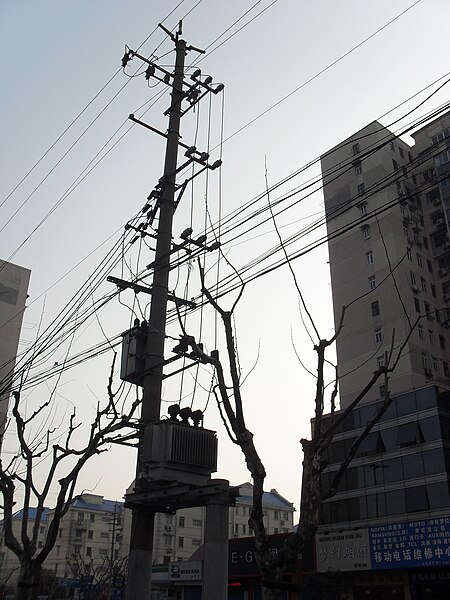Putting cables (electrical, coax, fibre – whatever) on existing poles, or even putting up new poles to carry a new service, seems like such an obviously cheaper and easier way to go. But is it really? Let’s look at some of the reasons why underground is almost always better than overhead – even though overhead looks cheaper.
Poles do seem to have some advantages. On poles, cables swoop effortlessly over roads, farmland, fences, houses and the like. Poles need only a few square metres at the base of each pole. The operator does not need to obtain permissions for every single metre of the cable path. There is no need to worry about cutting old cables while laying the new. And the machinery for putting up poles is pretty simple compared to the requirements for laying conduit.
But it’s not that simple. Poles actually have many disadvantages, and these generally outweigh the advantages. Sadly the lower initial cost is often all it takes to push the decision in favour of poles rather than underground, even though in the longer term, the cost for overhead will be far higher. Sometimes it’s just that hanging cables on poles is simpler and easier – especially if the poles are there already. Operators owe it to themselves, their customers and the communities they operate in to make sure people know the full story, before they plump for poles.
So what are the disadvantages of running overhead cables instead of putting them in the ground?
Poles and suspended cables are vulnerable to extreme weather, especially lightning, wind and (in some countries) ice. Poles in some locations can attract lightning.
Poles are vulnerable to fire. Even if the pole is not flammable (steel, concrete), the cables are exposed, and can be damaged by fire passing beneath them.
Underground cables are invulnerable to just about everything except earthquake and flood, and (in rare cases) vermin attack.
Poles can fall over – when weakened, when struck by a vehicle or lightning, or in high winds, or in an earthquake. If a falling pole hits anything, it will cause extensive damage. Buried pits and cables can’t fall.
When a pole falls, the cables pose a great danger, especially if electrified. A cable that parts under great tension is deadly while still moving, even if not electrified. Fallen electrical cables can start fires.
Failure in a trench or pit, on the other hand, is generally harmless. Even very high voltages will ground harmlessly. If an earthquake puts the cables under such tension that they part, the energy is contained in the surrounding earth.
Fixing cabling on poles is a highly specialised and dangerous job, even where the cabling is not electrified. It all happens at a height where a fall will cause severe injuries or death. Work requires specialist training, a lot of preparation and heavy equipment such as cherry-pickers. Working in a pit is a lot simpler and safer.
Poles are unsightly. I doubt there is anyone who really feels that a pole festooned with wires is a beautiful thing – and certainly not when compared to the almost complete visual absence of underground conduits.
Poles near roads are one more thing that cars, bikes, pedestrians and pets can run into.
Poles can be easily climbed by the young and the insane. They are easy to find, too. Pits are a lot less obvious. Getting into a pit doesn’t have quite the same universal thrill as getting up high, and pits can be locked.
Poles, insulators, mounts and the cables themselves can be shot at – this is surprisingly common in rural areas. Vandalism in general is easier with poles than with pits.
Suspended cables can be easily reached with thrown objects esp. shoes.
Suspended cables can be hit by other things – high trucks, extended ladders, birds, aircraft, kites etc.
Suspended cables are vulnerable to attack by birds and (in some countries) climbing animals.
Suspended cables (and other exposed equipment) must be weather- UV- and vermin-proof.
Poles block some land uses. They are a physical obstacle – one cannot run or drive through them, they cannot be built over (or too near to). Trees cannot be planted below the suspended cables, or anywhere near them.
Underground cabling does have disadvantages, too, of course. It typically has a greater up-front cost. Overall, however, placing cabling underground is a far better long-term solution than suspending it overhead.